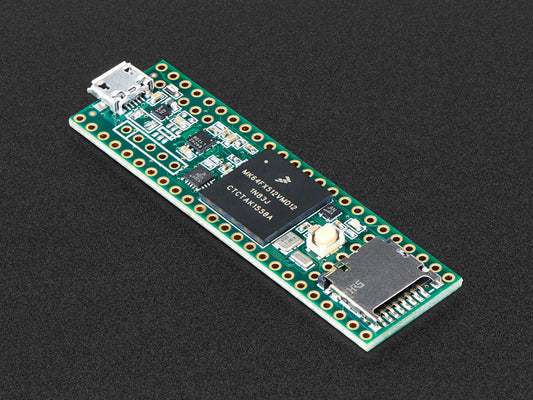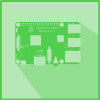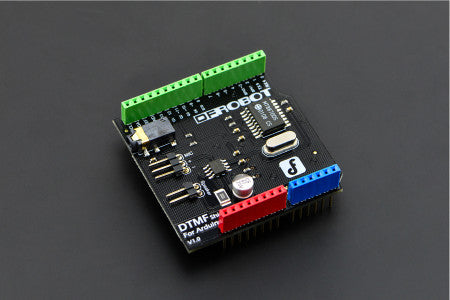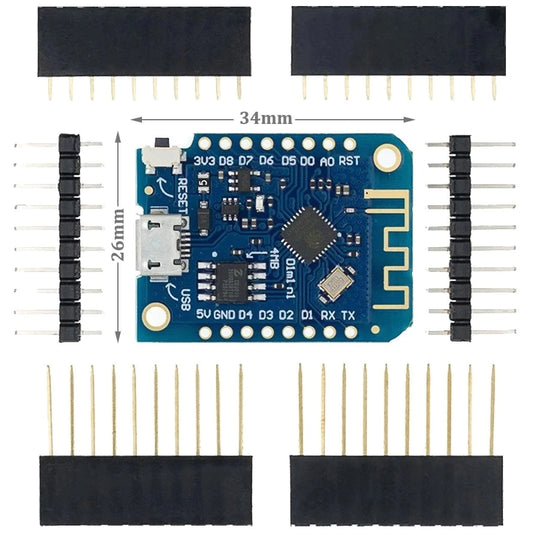Microcontroller - A microcontroller is a compressed microprocessor designed to manage embedded systems in office equipment, robots, home appliances, cars, and several other devices. With a processor memory and peripherals that can be utilized as an 8051 Microcontroller, it can be viewed as a self-contained system. Since most modern microcontrollers are integrated into other types of technology, like cars, phones, appliances, and computer system peripherals.
Although the microcontroller is a fast device, it operates more slowly than a computer; therefore every command is carried out in the microcontroller at an incredible rate. The quartz oscillator is enabled by the control logic register in case of power supply is turned ON, The parasite capacitors are charged in the initial milliseconds when the early preparation is taking place.
The process of writing bits to special function registers begins when the voltage level reaches its maximum value and the quartz oscillator's frequency stabilizes. The oscillator's clock sets everything in motion, and the electronics as a whole begin to function.
Types of Microcontroller
A microcontroller is a compact integrated circuit designed to govern a specific operation in an embedded system. A typical microcontroller includes a processor, memory, and input/output (I/O) peripherals on a single chip. Check below to check out the details.
PIC Microcontroller
PIC, which stands for peripheral interface controller, is a class of microcontroller parts that have been used to create electronic gadgets, computer robots, and related hardware. The code and data are placed in separate registers here to increase input and output, even though the PIC was created by Microchip technology and is based on hardware computing architecture. The pic features a separate microprocessor, data bus, and internal data store for preparing all I/O techniques and purposes.
ARM Microcontroller
Advanced RISC Machine is the ARM acronym. In the field of digital embedded systems, it is the most widely used microcontroller programming, and most companies only use ARM microcontrollers since they have important capabilities that enable the implementation of goods with a superior aesthetic. It is a high-performance, cost-sensitive technology that has been employed in a variety of applications, including automobile body systems, industrial instrument control systems, wireless networking systems, and sensors.
8051 Microcontroller
In 1981, Intel developed the 8051 microcontrollers. An 8-bit microcontroller is used. It is constructed with a 40-pin DIP (Dual inline package), 2 16-bit timers, 4 KB of ROM storage, and 128 KB of RAM storage. It has four parallel 8-bit ports that can be programmed and addressed following the standard.
AVR Microcontroller
Alf and Vegard's RISC Processor is known as AVR. It was a modified Harvard architectural machine with distinct physical memory systems for programs and data that appear in various address spaces and the ability to traverse information items from programs memory by using specific shortcuts. AVR does not stand for anything in particular and is not an associate degree signifier.
MSP Microcontroller
Mixed Signal Processor is an abbreviation. It's the Texas Instruments clan. The MSP is created for low cost and thus low power consumption integrated statements and is built around a 16-bit CPU. The 16-bit data bus, seven addressing modes, and the smaller instruction set, which enable a shorter, denser programming code for quick performance, are all closely tied to the controller's look.
An IC chip called a microcontroller runs programs to control other machines or devices. Microcontrollers Programming refers to the micro-device in question, which is used to control other machines.
Lists of Microcontroller Applications
- Mobile devices
- Automobiles
- Cameras / Appliances
- Computer System / Alarms for Security
- Instruments for electronic measurements
- Microwave
Advantages of Microcontroller
- A microcontroller is small, inexpensive, and simple to use. Consequently, it can be integrated into any gadget.
- To view the outcomes of our microcontroller programming in action, we can use computer simulators. These enable us to complete an embedded project without even purchasing the necessary chips and components.
- Microcontroller programming is a basic skill to pick up. It's not difficult.
- We may virtually observe how our project or program is operating.
Frequently Asked Questions about Microcontroller
Q1: How to diversify Microcontrollers and Microprocessors
There are three main differences between Microcontrollers and Microprocessors
Cost
In general, microcontrollers are less expensive than microprocessors. The majority of microprocessors are produced to work with more expensive hardware that depends on external peripherals for performance. They are also considerably more sophisticated since, unlike microcontrollers, they are designed to carry out a variety of computing tasks. To enable more complicated computing operations, microprocessors also need a reliable external memory source.
Engineers create the code for a particular application using a microcontroller, compile it, and transfer it into the microcontroller, which internally has all of the computing resources required to run the code. Microcontrollers usually require less memory, computing power, and overall intricacy than microprocessors because of their specific applications' limited scope; this results in a reduced cost.
Speed
High-quality microcontrollers and industry-leading microprocessor chips differ significantly in terms of overall clock speed. This pertains to the notion that microprocessors are designed for more complicated, reliable, and unpredictable computing jobs, whereas microcontrollers are intended to tackle a specific task or application.
The ability to optimize microcontrollers to run the code for a particular purpose is one of their major design advantages. That entails employing the proper amount of speed and power to do the task, neither more nor less. Because of this, many microprocessors can function at speeds of up to 4 GHz, but microcontrollers can only do so at 200 MHz or less.
However, despite their slower clock speeds, microcontrollers can still accomplish tasks swiftly due to the proximity of on-chip components. Due to their reliance on communication with external peripherals, microprocessors can occasionally run more slowly.
Power Consumption
The low power consumption of microcontrollers is one of their main benefits. A computer processor with a focused function uses less speed and, thus, less power than one with a large computational capability. Power consumption is a key consideration in implementation design: whereas a CPU with high power consumption may require external support or a plug-in, one with low power consumption may be able to run for an extended period on a single little battery.
For tasks that require low computational power, it can be much more cost-effective to implement a microcontroller versus a microprocessor that consumes much more power for the same output.
 Sold out
Sold out Sold out
Sold out Sold out
Sold out

















